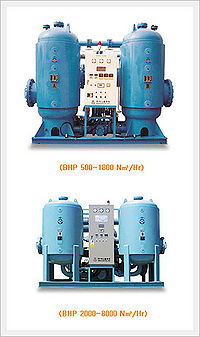Adsorption Heaters
Combining an adsorbent with a refrigerant, adsorption heaters use heat to provide a heating effect. This heat, in the form of hot water, may come from any number of industrial sources including waste heat from industrial processes, prime heat from solar thermal installations or from the exhaust or water jacket heat of a piston engine or turbine.
Although there are similarities between absorption and adsorption refrigeration, the latter is based on the interaction between gases and solids. The adsorption chamber of the chiller is filled with a solid material (for example zeolite, silica gel, alumina, active carbon and certain types of metal salts), which in its neutral state has adsorbed the refrigerant. When heated, the solid desorbs (releases) refrigerant vapour which subsequently is cooled and liquefied. This liquid refrigerant then provides its cooling effect at the evaporator, by absorbing external heat and turning back into a vapour. In the final stage the refrigerant vapour is (re)adsorbed into the solid. As an adsorption chiller requires no moving parts, it is relatively quiet.
Common Applications
- make air clean
- deodorant,odor killer
- VOC killer
- for portable stove
- for fish roaster
